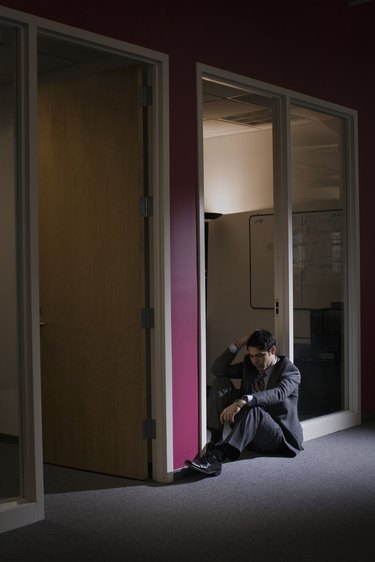Things You'll Need
Phillips head screwdriver
Assistant to help (optional)

A door being opened and closed thousands of times can cause wear on the door hinges. If the hinge screws become loose, they can move around and cause the door itself to move slightly out of place. Additionally, some doors may expand, contract or become warped due to temperature or moisture. The result may be a door that isn't flush and may not open and close properly. If it's not corrected, damage can be done to the door frame, the door, the hinges, and even to the floor if the door drags.
Step 1
Determine if the door is not shutting all the way (the inside edge of the door scrapes the inside door frame and the door doesn't latch) or the door is overextended and can't close (the door latch or outside door edge hits the door frame on the strike plate side).
Video of the Day
Step 2
Loosen the hinge screws on each hinge. You may choose to have another person steady the door and keep it from dropping too low when the hinge screws are loose.
Step 3
Line up the hinges so they are both in a straight line. If the door was overextended, move the hinges slightly back away from the doorway. If the door was too far in toward the hinge side, move the hinges slightly toward the doorway. You may need to remove the hinge screws completely to facilitate this step.
Step 4
Have your assistant hold the door in place while you fully tighten the hinge screws.
Step 5
Gently swing the door back and forth and open and close it to ensure that the door is flush.
Tip
Straigten and tighten the strike plate screws to ensure that the strike plate is flush inside the doorway. The strike plate is the metal piece that the door latch and bolt click into when the door is shut.
Warning
Do not let the door hang by one hinge as this can cause damage to the door, the frame and the hinge mechanism.
Video of the Day